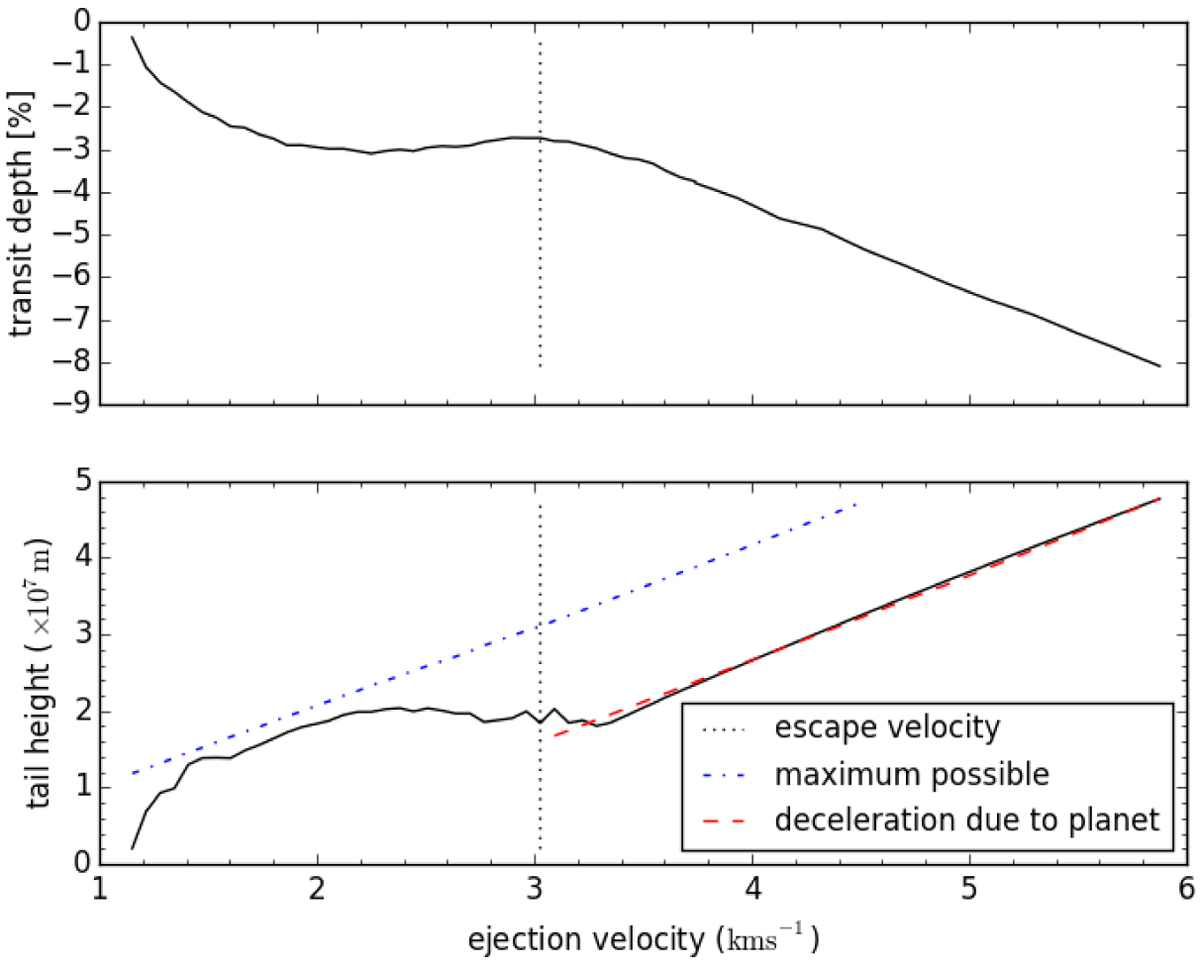Fig. 22

Transit depth (top panel) and maximum tail height (extent from the planet’s orbital plane; bottom panel) as a function of meta-particle ejection velocity. The meta-particles were ejected with a spherically symmetric distribution from a planet of mass 0.02 M⊕ and radius of0.3 R⊕. After the tail was simulated, the dust mass was scaled to the arbitrary large value of 1.2 × 1016 kg to ensure that the tail was optically thick. The vertical dotted line is the surface escape velocity. The blue dash-dotted line is the maximum height that tail meta-particles could attain if they were not decelerated in the vertical direction (perpendicular to the planet’s orbital plane) by the planet’s gravity. The dashed red line is the maximum height that tail meta-particles could attain if their vertical velocity were decelerated by the planet’s gravity for the time it takes the meta-particles to radially move beyond the planet’s Hill sphere, after being accelerated by the centrifugal acceleration (consideringthe co-rotating reference frame).
Current usage metrics show cumulative count of Article Views (full-text article views including HTML views, PDF and ePub downloads, according to the available data) and Abstracts Views on Vision4Press platform.
Data correspond to usage on the plateform after 2015. The current usage metrics is available 48-96 hours after online publication and is updated daily on week days.
Initial download of the metrics may take a while.


